
Whaling is the process of hunting of whales for their usable products such as meat and blubber, which can be turned into a type of oil which became increasingly important in the Industrial Revolution. It was practiced as an organized industry as early as 875 AD. By the 16th century, it had risen to be the principal industry in the coastal regions of Spain and France. The industry spread throughout the world, and became increasingly profitable in terms of trade and resources. Some regions of the world's oceans, along the animals' migration routes, had a particularly dense whale population, and became the targets for large concentrations of whaling ships, and the industry continued to grow well into the 20th century. The depletion of some whale species to near extinction led to the banning of whaling in many countries by 1969, and to a worldwide cessation of whaling as an industry in the late 1980s.
The International Whaling Commission (IWC) is an international body established under the terms of the 1946 International Convention for the Regulation of Whaling (ICRW) to "provide for the proper conservation of whale stocks and thus make possible the orderly development of the whaling industry".
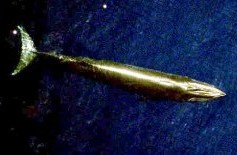
Bryde's whale, or the Bryde's whale complex, putatively comprises three species of rorqual and maybe four. The "complex" means the number and classification remains unclear because of a lack of definitive information and research. The common Bryde's whale is a larger form that occurs worldwide in warm temperate and tropical waters, and the Sittang or Eden's whale is a smaller form that may be restricted to the Indo-Pacific. Rice's whale which makes its home solely in the Gulf of Mexico was once considered a subspecies of Bryde’s whale, but it is now accepted as a distinct species. Also, a smaller, coastal form of B. brydei is found off southern Africa, and perhaps another form in the Indo-Pacific differs in skull morphology, tentatively referred to as the Indo-Pacific Bryde's whale. The recently described Omura's whale, was formerly thought to be a pygmy form of Bryde's, but is now recognized as a distinct species.

Baleen whales, also known as whalebone whales, form a parvorder of the infraorder Cetacea. They are a widely distributed and diverse parvorder of carnivorous marine mammals. Mysticeti comprise the families Balaenidae, Balaenopteridae (rorquals), Cetotheriidae, and Eschrichtiidae. There are currently 15 species of baleen whales. While cetaceans were historically thought to have descended from mesonychids,, molecular evidence supports them as a clade of even-toed ungulates (Artiodactyla). Baleen whales split from toothed whales (Odontoceti) around 34 million years ago.

The minke whale, or lesser rorqual, is a species complex of baleen whale. The two species of minke whale are the common minke whale and the Antarctic minke whale. The minke whale was first described by the Danish naturalist Otto Fabricius in 1780, who assumed it must be an already known species and assigned his specimen to Balaena rostrata, a name given to the northern bottlenose whale by Otto Friedrich Müller in 1776. In 1804, Bernard Germain de Lacépède described a juvenile specimen of Balaenoptera acuto-rostrata. The name is a partial translation of Norwegian minkehval, possibly after a Norwegian whaler named Meincke, who mistook a northern minke whale for a blue whale.

The common minke whale or northern minke whale is a species of minke whale within the suborder of baleen whales.
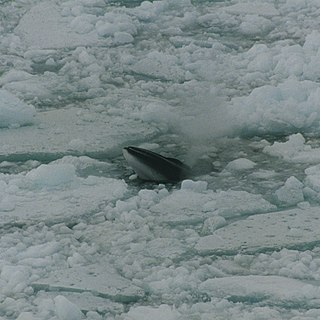
The Antarctic minke whale or southern minke whale is a species of minke whale within the suborder of baleen whales. It is the second smallest rorqual after the common minke whale and the third smallest baleen whale. Although first scientifically described in the mid-19th century, it was not recognized as a distinct species until the 1990s. Once ignored by the whaling industry due to its small size and low oil yield, the Antarctic minke was able to avoid the fate of other baleen whales and maintained a large population into the 21st century, numbering in the hundreds of thousands. Surviving to become the most abundant baleen whale in the world, it is now one of the mainstays of the industry alongside its cosmopolitan counterpart the common minke. It is primarily restricted to the Southern Hemisphere and feeds mainly on euphausiids.

Whale watching is the practice of observing whales and dolphins (cetaceans) in their natural habitat. Whale watching is mostly a recreational activity, but it can also serve scientific and/or educational purposes. A study prepared for International Fund for Animal Welfare in 2009 estimated that 13 million people went whale watching globally in 2008. Whale watching generates $2.1 billion per annum in tourism revenue worldwide, employing around 13,000 workers. The size and rapid growth of the industry has led to complex and continuing debates with the whaling industry about the best use of whales as a natural resource.

The southern right whale is a baleen whale, one of three species classified as right whales belonging to the genus Eubalaena.

The pygmy right whale is a member of the cetotheres, a family of baleen whales, which until 2012 were thought to be extinct; previously C. marginata was considered the sole member of the family Neobalaenidae. First described by John Edward Gray in 1846, it is the smallest of the baleen whales, ranging between 6 and 6.5 metres in length and 3,000 and 3,500 kilograms in mass. Despite its name, the pygmy right whale may have more in common with the gray whale and rorquals than the bowhead and right whales.
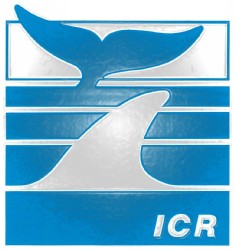
The Institute of Cetacean Research: is a non-profit organisation in Japan which claims to be a research organization specializing in the "biological and social sciences related to whales".

Japanese whaling, in terms of active hunting of whales, is estimated by the Japan Whaling Association to have begun around the 12th century. However, Japanese whaling on an industrial scale began around the 1890s when Japan started to participate in the modern whaling industry, at that time an industry in which many countries participated. Modern Japanese whaling activities have extended far outside Japanese territorial waters, including whale sanctuaries protected by other countries.
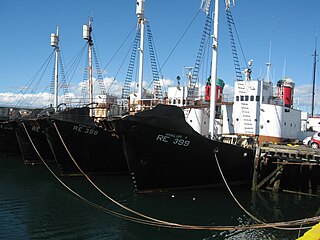
Whaling in Iceland began with spear-drift hunting as early as the 12th century, and continued in a vestigial form until the late 19th century, when other countries introduced modern commercial practices. Today, Iceland is one of a handful of countries that formally object to an ongoing moratorium established by the International Whaling Commission in 1986, and that still maintain a whaling fleet. One company concentrates on hunting fin whales, largely for export to Japan, while the only other one hunts minke whales for domestic consumption, as the meat is popular with tourists. In 2018, Icelandic whalers were accused of slaughtering a blue whale.
Whaling in Norway involves hunting of minke whales for use as animal and human food in Norway and for export to Japan. Whale hunting has been a part of Norwegian coastal culture for centuries, and commercial operations targeting the minke whale have occurred since the early 20th century. Some still continue the practice in the modern day.
The Southern Ocean Whale Sanctuary is an area of 50 million square kilometres surrounding the continent of Antarctica where the International Whaling Commission (IWC) has banned all types of commercial whaling. To date, the IWC has designated two such sanctuaries, the other being the Indian Ocean Whale Sanctuary.
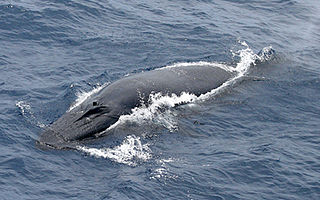
Johan Bryde was a Norwegian businessperson, ship owner and whaler. He helped establish the first modern whaling station in the country of South Africa. The Bryde's whale is named after him.

Whale conservation refers to the conservation of whales.

The southern bottlenose whale is a species of whale, in the Ziphiid family, one of two members of the genus Hyperoodon. Seldom observed, the southern bottlenose whale is resident in Antarctic waters. The species was first described by English zoologist William Henry Flower in 1882, based on a water-worn skull from Lewis Island, in the Dampier Archipelago, Western Australia.
Peter Barrington Best was an English marine biologist known for his research on whales and dolphins of Southern Africa. He was described as the world’s foremost authority on the whales and dolphins of the Southern African region.
















